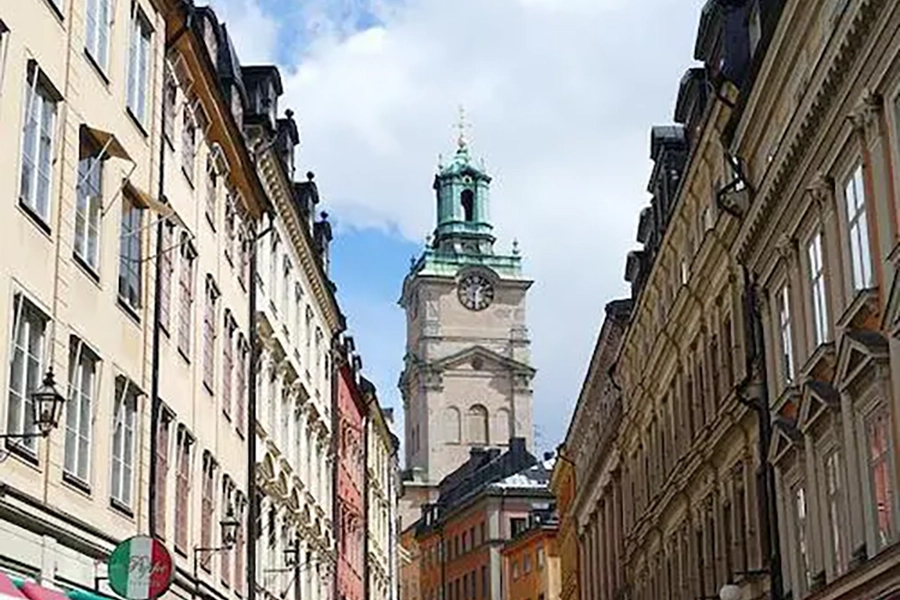With the majority of the world’s population living in urban areas, and cities accounting for 70% of global greenhouse gas emissions, local governments will play a central role in allocating the $6 to $9 trillion per year that must be invested in the global sustainability transition this decade, concludes the latest Sustainable Cities Index published by Corporate Knights.
But the bigger question is how municipalities will find the resources to drastically scale up the transition work many of them are already doing, to rapidly reduce their emissions while simultaneously preparing for the climate-related emergencies on the horizon, said Corporate Knights Research Director Ralph Torrie, in a follow-up interview to the annual index published in March.
“It’s way bigger than local governments themselves can accomplish. But what they can do is play the role of impresario by coordinating, cajoling, and leading their communities in response to climate change,” Torrie said. “In the last 10 years or less, we’ve seen communities’ plans and strategies for responding to climate change get much more ambitious than they were before,” extending their focus from city operations and facilities to envision a “wholesale reinvestment” in buildings, built infrastructure, and transportation, including major, new funding for public transit.
From that starting point, Corporate Knights’ big-picture analysis calls for a flurry of new, local investment that includes:
• $1.5 trillion per year for green buildings;
• $2 trillion per year for zero-emission transportation;
• $1 trillion per year for smart microgrids.
View the city rankings in this year’s Sustainable Cities Index here. Find Corporate Knights’ full coverage of the Index here.
Cities like Bristol, UK “are really sinking their teeth into implementation now, and that could be the big story of the 2020s for local governments and climate change,” Torrie said. There’s going to be a proliferation of local strategies to tackle the financing, the logistics, and also the emergency preparedness dimensions, because climate change is about to get a lot worse—we know that.”
That means cities’ next, essential step is to start delivering big, ambitious projects at the neighbourhood scale—conducting deep retrofits on existing buildings by the hundreds, rather than one at a time, developing area microgrids in tandem to discover which models work best and why, and raising the billions in private capital that will be needed to supplement public investment. Then they’ll need to share what they know so that communities can quickly adopt and adapt each other’s biggest successes.
That amped-up effort is needed because “this is going to really take us by the throat now,” he said. “And when push comes to shove, we’re going to need a level of climate literacy at the local government level, that there are people inside city halls who understand there’s a peaceful solution to the war we’ve been engaging in with nature. Local governments and their spheres of influence are going to be key to negotiating that peace.”
This year’s Sustainable Cities Index assesses 70 cities around the world against 12 indicators, including factors like air quality and emissions, sustainable transportation options and automobile dependence, potable water access and climate change resilience, and renewable energy policy. Some of the standout cities in specific categories include:
• Stockholm, with the lowest direct emissions, largely due to its district energy system;
• Winnipeg, with the best urban air quality despite the threat of increased wildfires in Manitoba;
• Amsterdam, a “sustainable transportation haven” where 40% of all travel happens by bike, and another 30% is on foot;
• Copenhagen, with the lowest per capita water consumption;
• Abidjan, Ivory Coast, with some of the world’s lowest consumption-based emissions—though “this is likely due to a high level of poverty rather than a shift in policy or lifestyle”;
• Oslo, with the greatest resilience to the impacts of climate change.
The six leading cities in the overall ranking—Stockholm; Oslo; Copenhagen; Lahti, Finland; London, UK; and Auckland, New Zealand—were the same that topped the chart in 2022. But this year, Corporate Knights organized the ranking by region and introduced a socio-economic adjustment factor to account for unsustainable living conditions.
“One might reasonably ask whether it is fair or even just to evaluate all cities to the same standard, when some are still recovering from colonial exploitation, or imposed austerity policies, and even war,” former Edmonton mayor Don Iveson wrote in an introduction to this year’s index. “Or whether it is comparable to juxtapose cities with massive informal settlements like São Paulo, Brazil (55th), with top-ranked San Francisco (21st), where almost nobody can afford to live.”
“If you only look at environmental factors, some of the poorest cities in the world score really well because they’re starving,” Torrie added. “It’s perverse, and it’s not sustainable.” To correct for that, he said this year’s index treated a country’s income as unsustainable if it fell below the European Union average.
Torrie cited Stockholm as a city that has begun looking at its consumption-based emissions—the carbon pollution embedded in the products it imports—a recognition that rich countries in a global economy have increasingly exported their emissions to countries whose own consumption has done the least to warm the atmosphere.
“It will be interesting to see what [Stockholm] can do about that,” he said. “It’s tricky. But there’s at least one mayor in a progressive city who’s starting to look at consumption as a municipal issue.”
With a series of measures based on outcomes and results, rather than targets and policies, Torrie said the rankings in the Sustainable Cities Index won’t change quickly: “these are not indicators that turn on a dime.” But that’s just one more indication that cities have to invest in big, bold initiatives to quickly scale up their climate performance—not because the index says so, but because the size and pace of the climate emergency demand it.
“We need to be at an inflection point,” he said. “We have to take this to the next level now in terms of the dollars that will have to be spent, the effort that will have to be put into it, and the priority it receives from councils, and I think we’re at that moment.”
As one measure of that continuing shift, “it’s just much less likely now than it was 10 or 20 years ago that the head of a public agency, a transit agency, or anyone working in any of those areas of community investment would look to the future without incorporating decarbonization into their thinking,” Torrie said. The earliest climate analysts and advocates anticipated exactly that, but now, their early expectations are being put to the test.
“The theory back in the early days was that if we don’t have climate literacy and local climate initiative, you’re staring down the barrel of eco-fascism at some point,” he said. “We always knew this was going to challenge our democratic institutions like they’ve never been challenged before, and our hope of getting through it would have to be widespread understanding that we don’t need to go that route, that there’s a better way forward.” That begins with local solutions that “give us a response to climate change that holds out the promise of more sustainable, equitable communities, as well as healthier and more productive communities.”
Through that lens, “the threat to end all threats could also be regarded as the opportunity that beats all past opportunities to finally establish a lasting peace with nature.”
This story origionally appeared at The Energy Mix.






